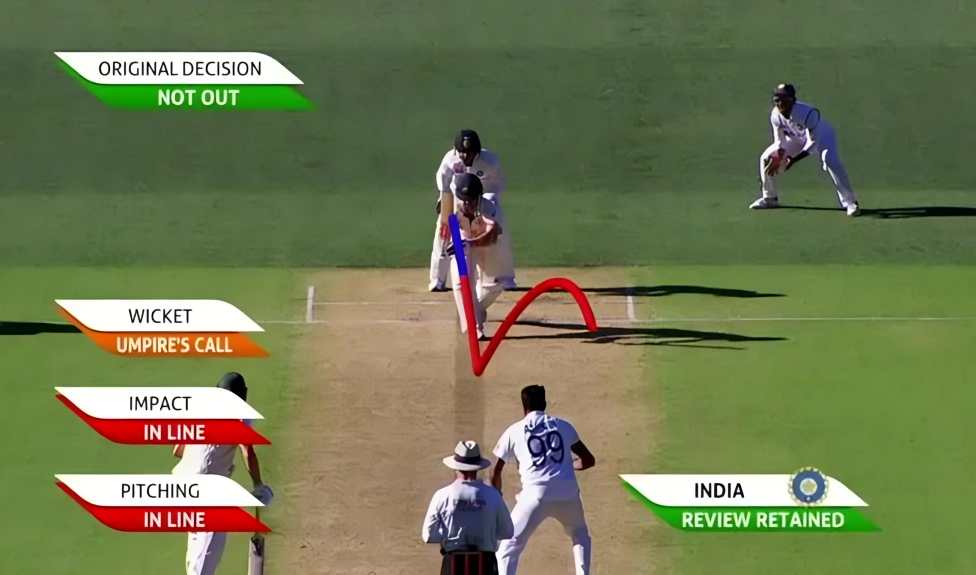At its basic level ‘Umpire’s Call’ is the provision that ensures that marginal decisions in LBW dismissals, when taken upon by a Decision Review System (DRS) appeal, remain in favour of the original decision made by the on-field umpire.
At its basic level, ‘Umpire’s Call’ is the provision that ensures that marginal decisions in LBW dismissals, when taken upon by a Decision Review System (DRS) appeal, remain in favour of the original decision made by the on-field umpire.
The ICC playing conditions define ‘Umpire’s Call’ as follows: “It is the concept within the DRS under which the on-field decision of the bowler’s end umpire shall stand, which shall apply under the specific circumstances… where the ball-tracking technology indicates a marginal decision in respect of either the Impact Zone or the Wicket Zone.”
To understand the process of ‘Umpire’s Call’, it is necessary to understand three factors.
Pitching Zone
The Pitching Zone is the two-dimensional area that spans the length of the pitch, with the outer edges of the stumps at each end acting as its boundaries.
Impact Zone
The Impact Zone is where the ball hits the batter’s pad for the first time. It is a three-dimensional area spaced between both sets of stumps, from ground level to an indefinite height. The outer edge of the leg and off stump act as its outer boundaries.
Wicket Zone
The Wicket Zone is a two-dimensional space, with the stumps, from their base to the top of the bails, and the full width from the outer edge of the off and leg stumps, bounding the area.
The ‘Umpire’s Call’ is not relevant for the Pitching Zone, as the ball-tracking technology has all the data needed to locate where the ball has landed. This means that the umpire’s judgement can be overturned if more than half of the ball has pitched on the leg side.
But when it comes to the Impact Zone and the Wicket Zone, if the ball-tracking projects less than fifty per cent of the ball to be in line or hitting the stumps, the decision of the on-field umpire will be upheld.

This means that if an on-field umpire had given a batter out LBW, the DRS projection should show the ball to be missing the stumps completely for the third umpire to overturn the decision.
Likewise, if an on-field umpire had given a batter not out for an LBW appeal, the DRS projection should show more than 50 percent of the ball hitting the stumps for the third umpire to overturn the original call.
“My personal opinion is that if the ball is hitting the stumps, it is hitting the stumps. They should take away the umpire’s call, if I’m being perfectly honest,” said Stokes during his side’s five-match Test series against India.

Stokes’ opinion has been mirrored by many, including Indian cricketing legend Sachin Tendulkar, who had earlier opined that the on-field umpire’s decision should not come into the picture after a LBW decision has been reviewed.
Stokes’ compatriot and former England captain Nasser Hussain, though, had earlier provided a staunch defence for ‘Umpire’s Call’.
“You need the umpire’s call. It’s not there to back up the umpire; it’s to give the margin of error for the technology. Umpires will give virtually everything out because they think it will be clipping, and we will have more two-day Test matches,” said Hussain in a Sky Sports video.
